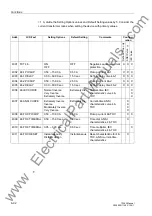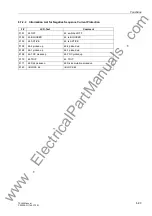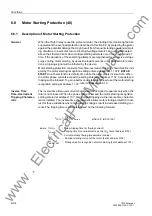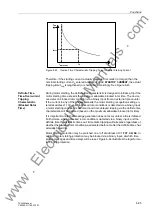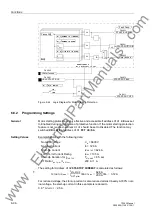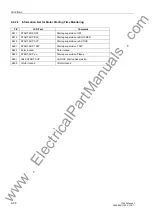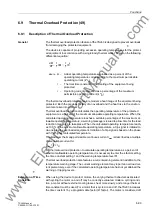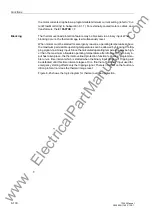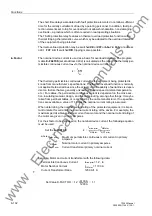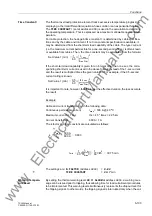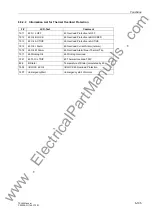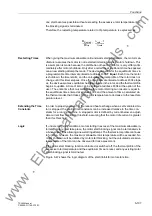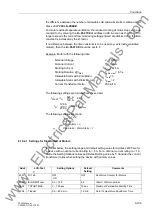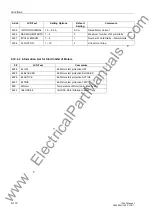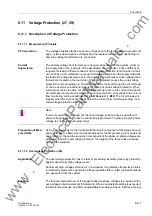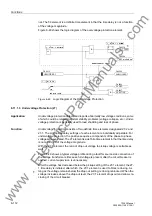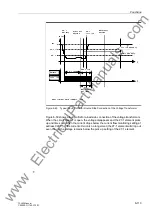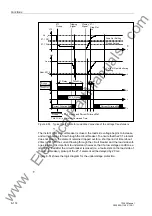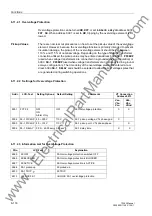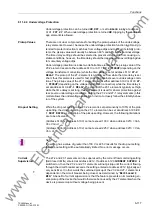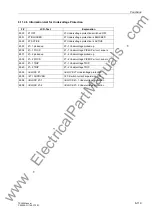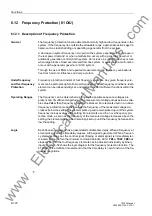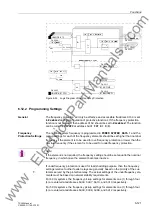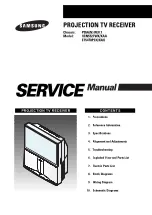
Functions
6-106
7SJ63 Manual
C53000-G1140-C120-1
6.10
Start Inhibit for Motors (66/68)
General
The rotor temperature of a motor generally remains well below its maximum allowable
temperature during normal operation and even during severe loading conditions. How-
ever, during motor starting, the rotor can heat up quickly. If multiple starting attempts
are made in a short duration of time, the rotor could suffer thermal damage. Therefore,
the 7SJ63 motor start blocking feature is available. A motor start blocking signal is ini-
tiated when the relay projects rotor temperature will exceed the maximum allowable
rotor temperature, and blocking continues until the calculated rotor temperature de-
creases below the reset level. To block starting, the blocking signal must be connected
to a binary output whose contact is inserted in the motor starting circuit.
6.10.1 Description of Start Inhibit for Motors
Determining
Excessive Rotor
Temperature
Because the rotor current cannot be measured directly, the stator current must be
used to generate a thermal profile of the rotor. The excessive rotor temperature is cal-
culated using the highest of the three phase currents. The thermal limit values for the
rotor winding are based on manufacturer’s data regarding the nominal starting current,
maximum permissible starting time, and the number of starts permitted from cold and
warm conditions. From this data, the device performs the necessary calculations to
establish the thermal rotor profile and issues a blocking signal until the thermal rotor
profile decreases below the restarting limit.
Although the heat distribution at the rotor brushes can range widely during motor start-
ing, the different maximum temperatures in the rotor do not necessarily affect motor
start blocking (see Figure 6-46). It is much more important to establish a thermal pro-
file, after a complete motor start, that is appropriate for the protection of the motor’s
thermal condition. Figure 6-46 shows, as an example, the heating processes during
repeated motor starts (three starts from cold operating condition), as well as the ther-
mal reproduction by the protective relay.
Figure 6-46
Temperature Curve at the Rotor and the Thermal Profile during Repeated Start-
ing Attempt
Restarting Limit
If the rotor temperature has exceeded the restarting limit, the motor cannot be restart-
ed. When the rotor temperature goes below the restarting limit, that is, when exactly
Θ
L
Maximum Allowable Rotor Temperature
Temperature Curve @:
Rotor Cage Bar Upper Side Limit
Rotor Cage Bar Lower Side Limit
Thermal
Profile
Restarting
Motor Started
1st Start
Motor Started
2nd Start
Motor Started
3rd Start
t
Rotor Tempe-
rature Equilib-
rium Time
Rotor Tempe-
rature Equilib-
rium Time
Rotor Tempe-
rature Equilib-
rium Time
www
. ElectricalPartManuals
. com

